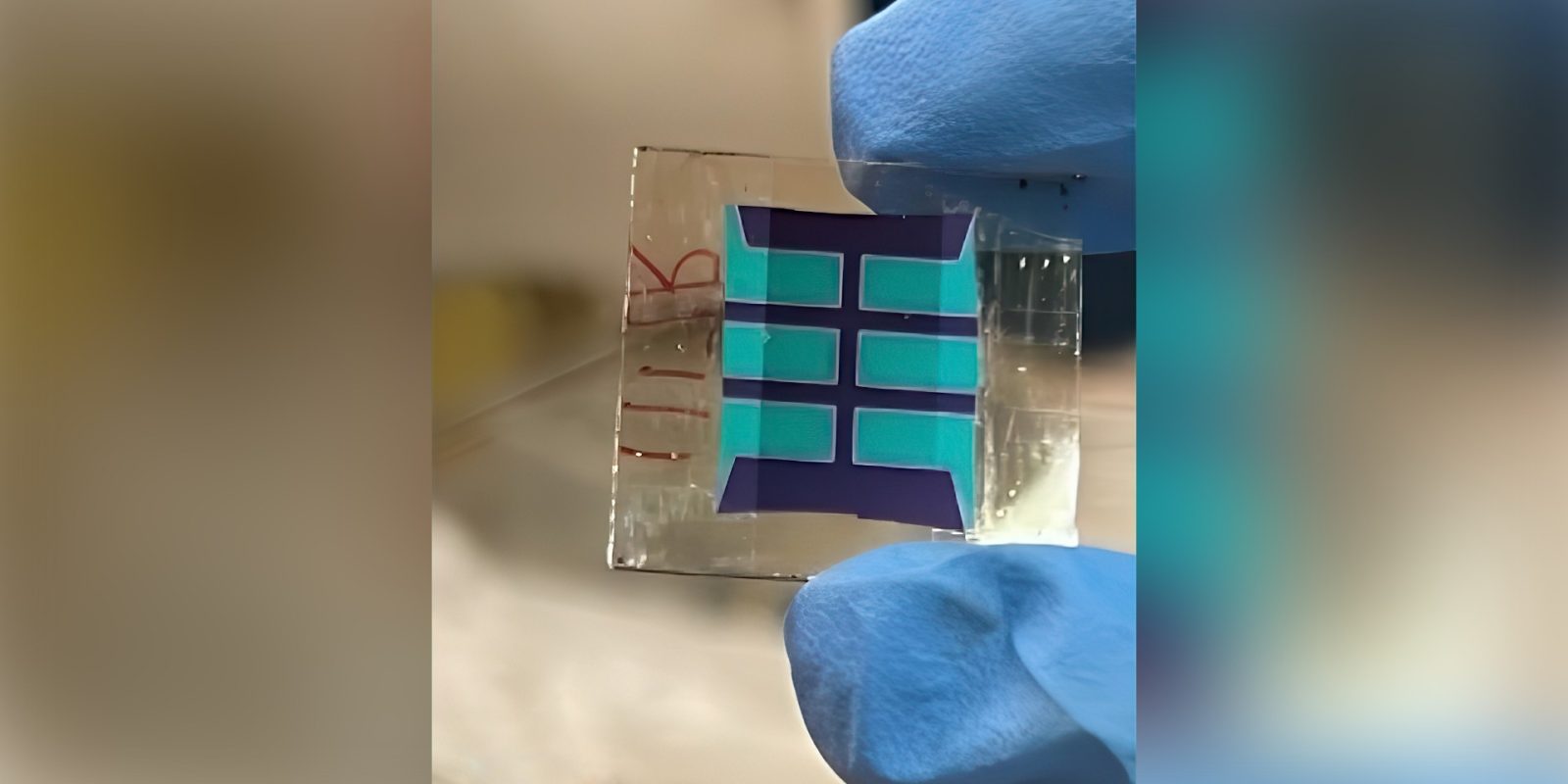
Sunlight reaches both sides of a bifacial perovskite solar cell, which means it could potentially produce higher energy yields for lower overall costs, according to a new study.
Bifacial solar cells capture direct sunlight on the front and reflected sunlight on the back. As a result, they outperform monofacial solar cells, according to a US Department of Energy National Renewable Energy Laboratory (NREL) study.
“This perovskite cell can operate very effectively from either side,” said Kai Zhu, a senior scientist in the Chemistry and Nanoscience Center at NREL. He’s the lead author of the paper, which was recently published in Joule and is called “Highly efficient bifacial single-junction perovskite solar cells.”
In past research, bifacial solar cells haven’t been able to compete with monofacial cells, which currently have a record of 26% efficiency.
Ideally, a bifacial cell should have a front-side efficiency close to the best-performing monofacial cell and a similar back-side efficiency, according to NREL researchers.
In this latest study, researchers were able to make a solar cell where both sides’ efficiency were comparable. The lab-measured efficiency of the front illumination rose above 23%, and from the back, efficiency was about 91-93% of the front.
The researchers worked out that the perovskite layer on the front of the cell had to be sufficiently thick to absorb most of the photons from a certain part of the solar spectrum, but a perovskite layer that’s too thick can block the photons.
The NREL team also had to figure out the ideal thickness of the rear electrode on the back of the cell to minimize resistive loss.
By utilizing simulations, the team found that the ideal thickness for a perovskite layer is around 850 nanometers. Compare that to a strand of human hair, which is around 70,000 nanometers thick.
They then placed the bifacial cell between two solar simulators and aimed direct light at the front side while the back side received reflected light. The cell’s efficiency climbed as the ratio of reflected light to the front illumination increased.
The research team notes that a bifacial perovskite solar module would cost more to manufacture than a monofacial module. But the more expensive upfront cost would be offset by the bifacial modules’ generation of 10-20% more power.
Read more: This 1 GW solar + salt + shrimp farm is a 3-in-1 power station
If you live in an area that has frequent natural disaster events, and are interested in exploring ways to make your home more resilient to power outages, consider going solar and adding a battery storage system. To make sure you find a trusted, reliable solar installer near you that offers competitive pricing, check out EnergySage. EnergySage is a free service that makes it easy for you to go solar. They have hundreds of pre-vetted solar installers competing for your business, ensuring you get high quality solutions and save 20-30% compared to going it alone. Plus, it’s free to use and you won’t get sales calls until you select an installer and you share your phone number with them.
Your personalized solar quotes are easy to compare online and you’ll get access to unbiased Energy Advisors to help you every step of the way. Get started here. –ad*
FTC: We use income earning auto affiliate links. More.


